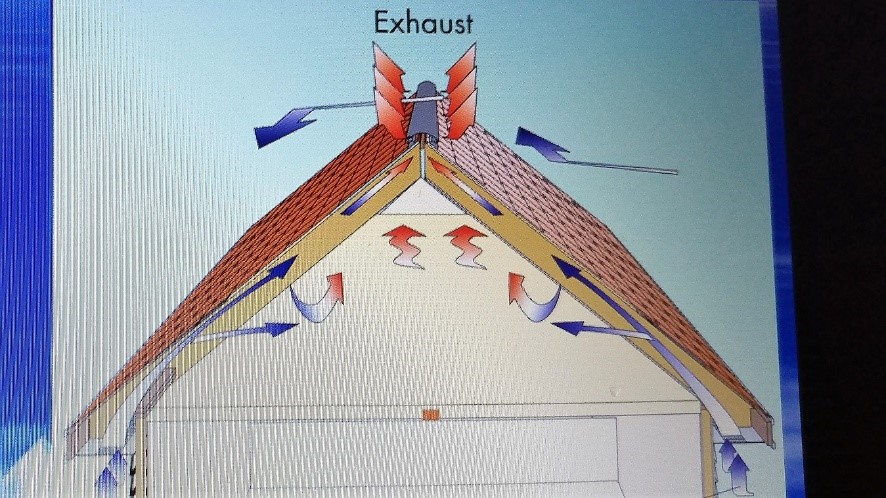As the owner of a manufacturers’ representative company, I spend my working hours focused on products related to residential and commercial building. I spend a lot of time educating roofers and their customers about the building industry, and I understand most solutions for common building problems.
Truth: Most Homes Have Poor Ventilation
Over the last 20 years, I have participated in 23 Ask The Expert™ residential attic ventilation seminars! Air Vent, a full-line ventilation manufacturer, is our primary product line that we sell for attic ventilation. My belief, after so many years of problem-solving, is that uncontrolled water vapor is public enemy #1! Here’s why.
The average family of four living in a home will generate 2-4 gallons of water vapor each day. Much of that water vapor comes from breathing. Simply go outside on a cold day and watch your breath.

 That water vapor is supposed to go into the attic space and be immediately washed away to the great outdoors by an effective ventilation system. The fact that people find mold on the underside of their roof deck, rusty roof nails sticking down into the attic space, damp compressed insulation, and mold on the inside of their exterior walls which aggravates allergies, is clear proof that most homes have poor ventilation.
That water vapor is supposed to go into the attic space and be immediately washed away to the great outdoors by an effective ventilation system. The fact that people find mold on the underside of their roof deck, rusty roof nails sticking down into the attic space, damp compressed insulation, and mold on the inside of their exterior walls which aggravates allergies, is clear proof that most homes have poor ventilation.
 Learn more about the many problems caused by improper attic ventilation.
Learn more about the many problems caused by improper attic ventilation.
How to Get a Balanced Attic Ventilation System
To be effective, a home’s attic ventilation system must be balanced. That means that half of the vent openings must be on the roof, and half must be in the soffit area (i.e. the eave or overhang).
To achieve a balanced attic ventilation system, try to get a total amount of ventilation openings in square inches (referred to as Net Free Area) on your roof and under your eaves that are equal to the total square footage of your attic floor space.


